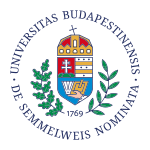Metropolitan Ervin Szabó Library
Baroque Revival architectureCulture in BudapestHungarian building and structure stubsLibraries in Hungary

Fővárosi Szabó Ervin Könyvtár (literally Metropolitan Ervin Szabó Library) is the largest library network in Budapest, Hungary. The Metropolitan Ervin Szabó Library's main branch is housed in the 19th-century neo-baroque Wenckheim Palace. The municipal library needed more space as its collection grew, so it expanded to a network of additional buildings while restoring the palace as a national monument. The library is now 13,000 m² and houses Budapest's largest public collection of books with a capacity for 1,100,000 volumes. In 2003, the International Real Estate Federation awarded the Prix d’Excellence to its central building.
Excerpt from the Wikipedia article Metropolitan Ervin Szabó Library (License: CC BY-SA 3.0, Authors, Images).Metropolitan Ervin Szabó Library
Baross utca, Budapest Palotanegyed
Geographical coordinates (GPS) Address Nearby Places Show on map
Geographical coordinates (GPS)
| Latitude | Longitude |
|---|---|
| N 47.489377777778 ° | E 19.0648 ° |
Address
Wenckheim-palota
Baross utca
1085 Budapest, Palotanegyed
Hungary
Open on Google Maps








